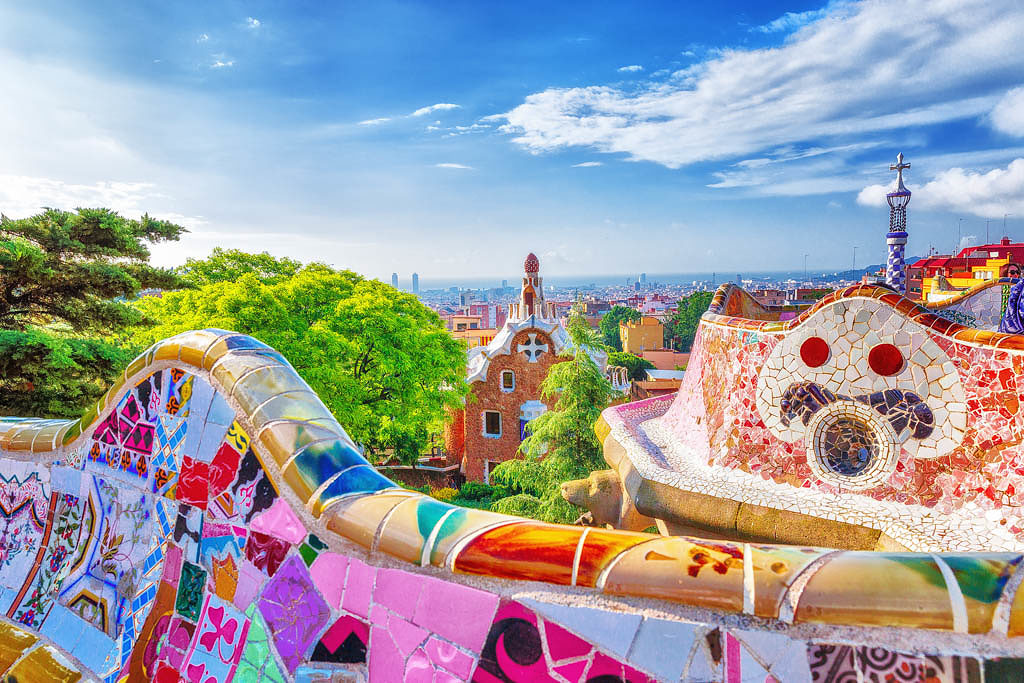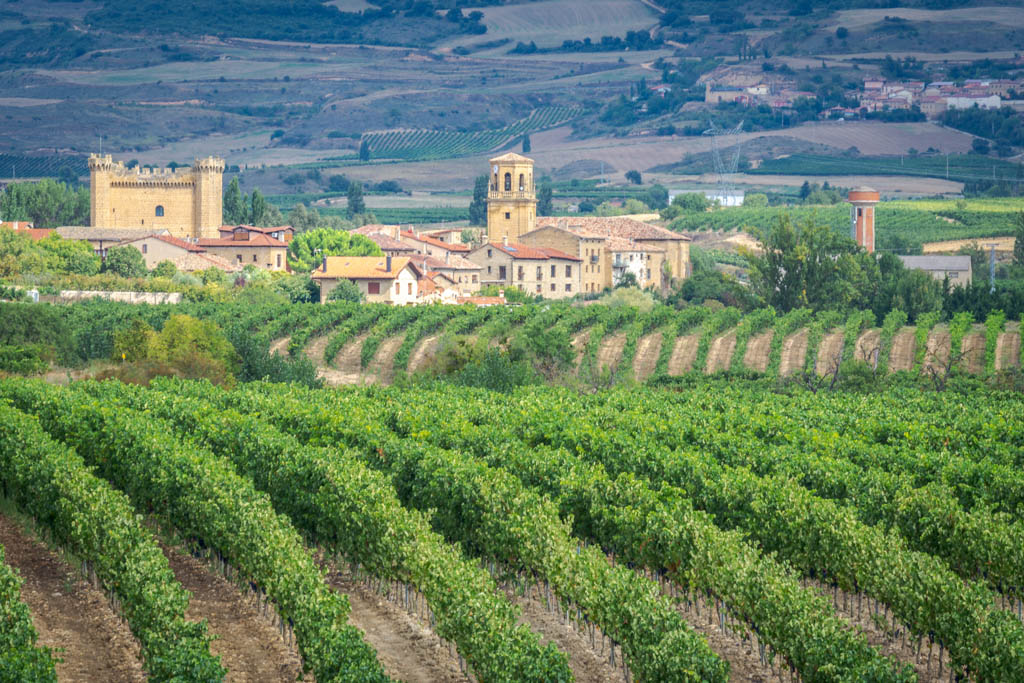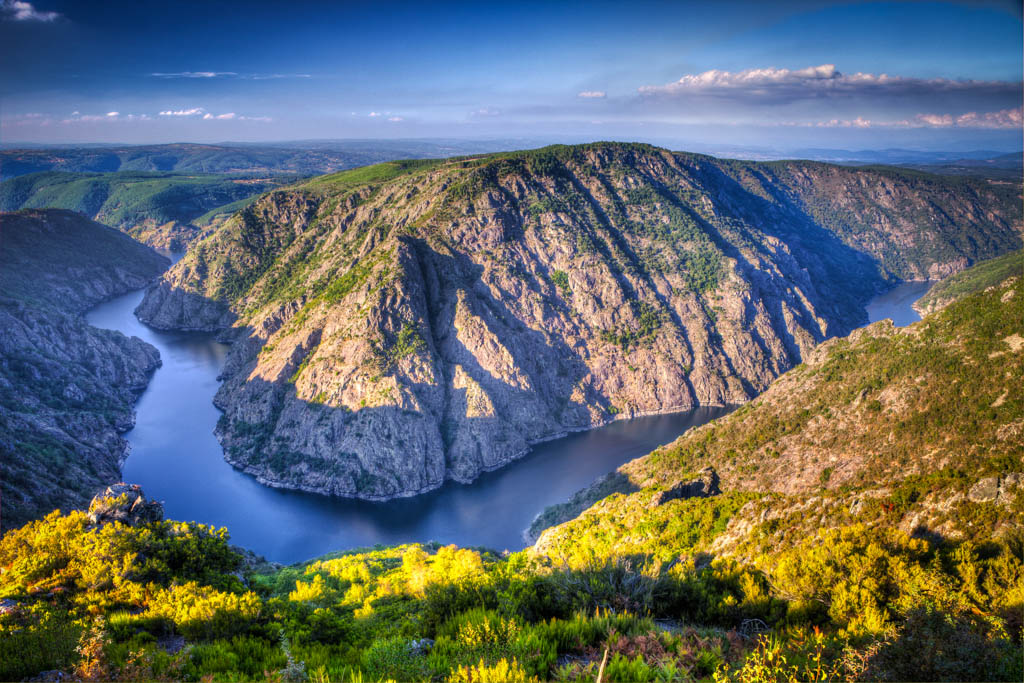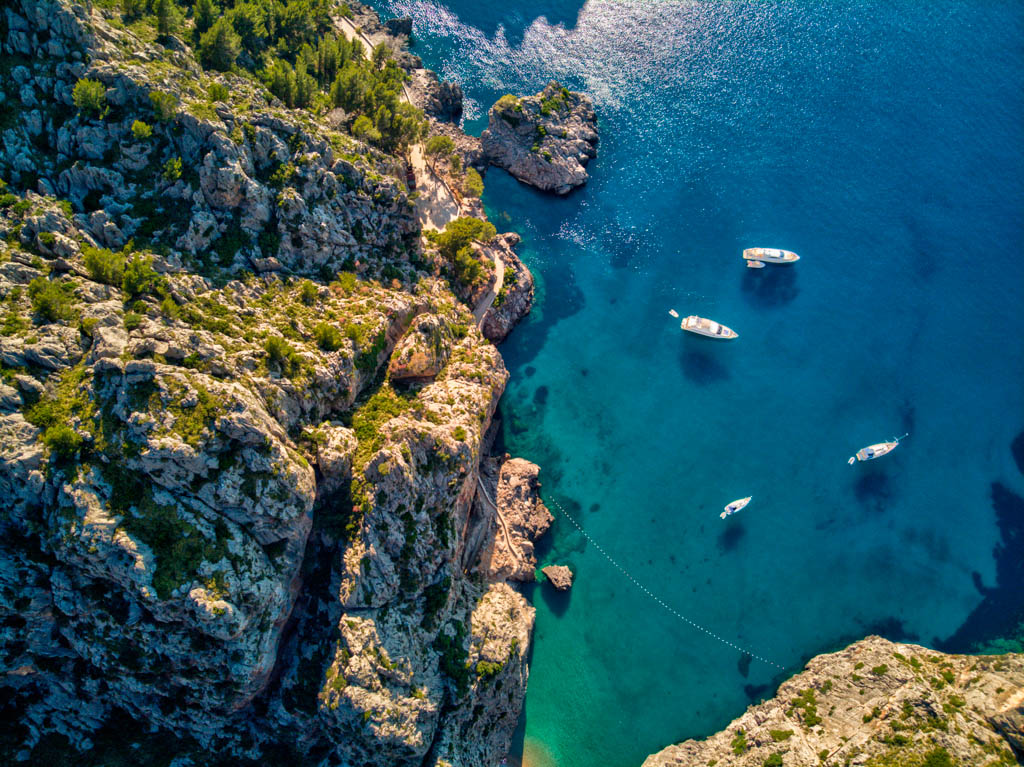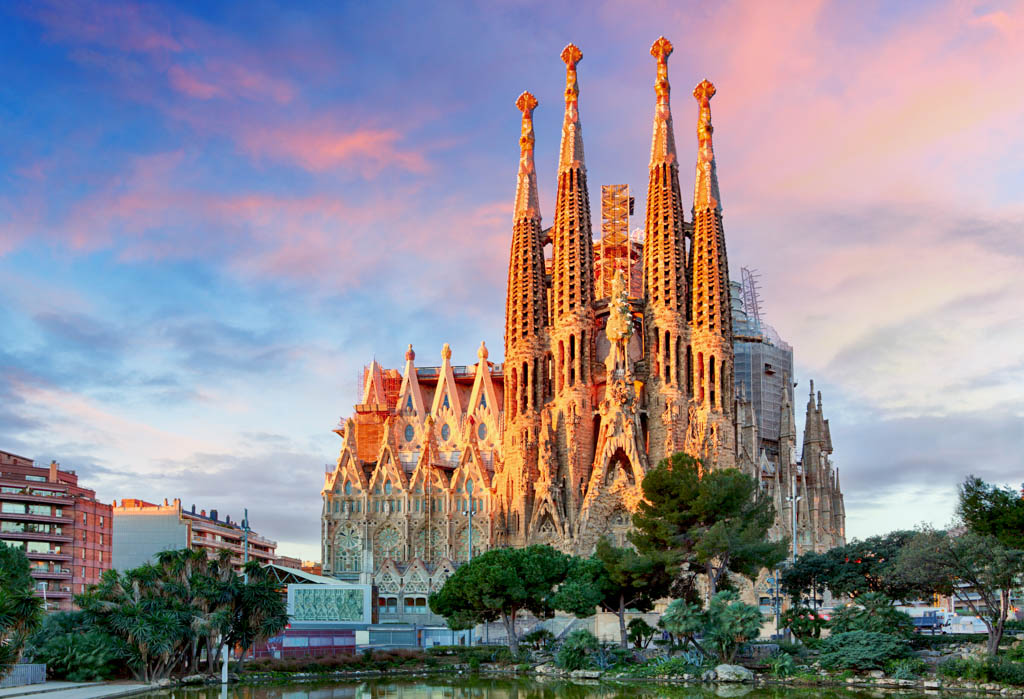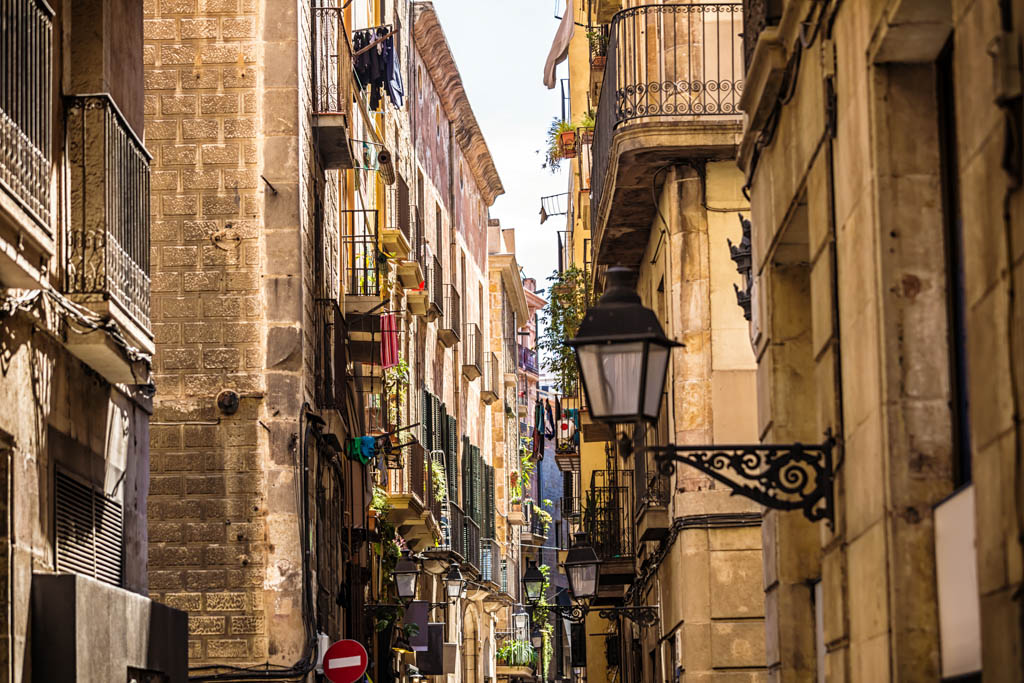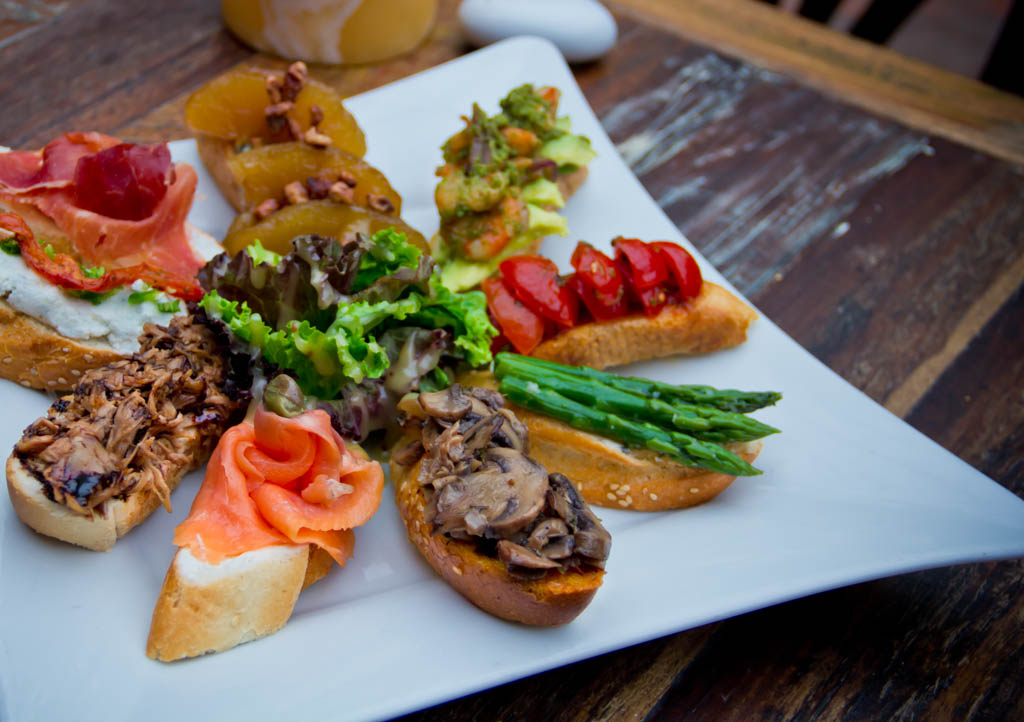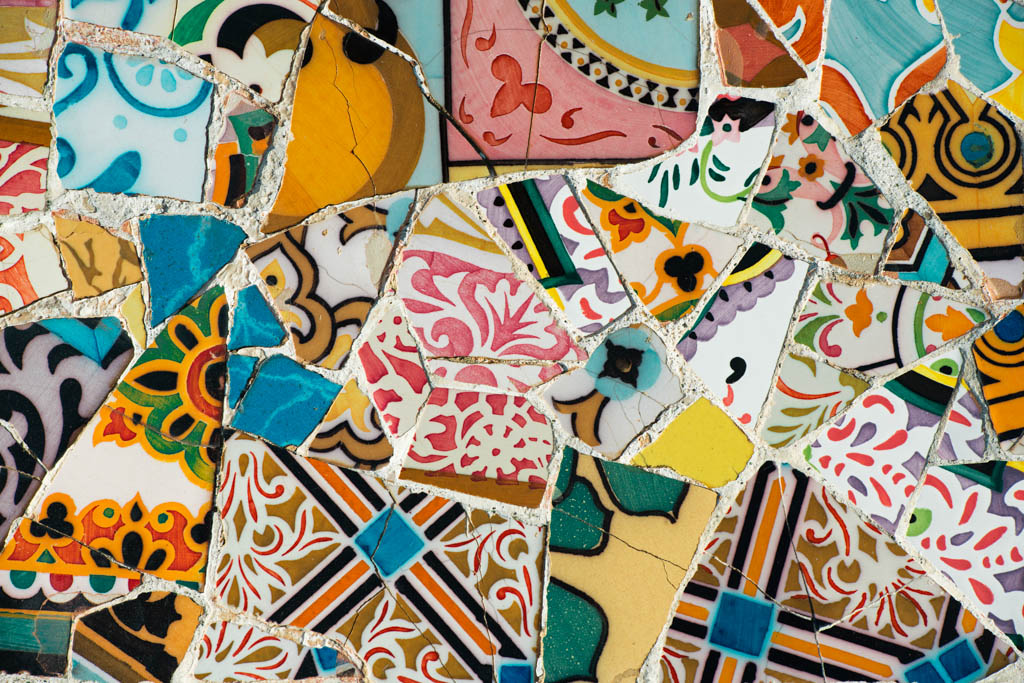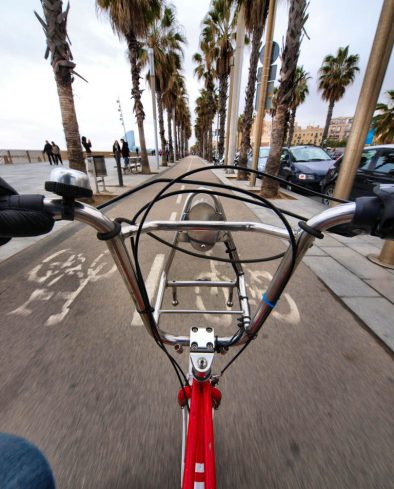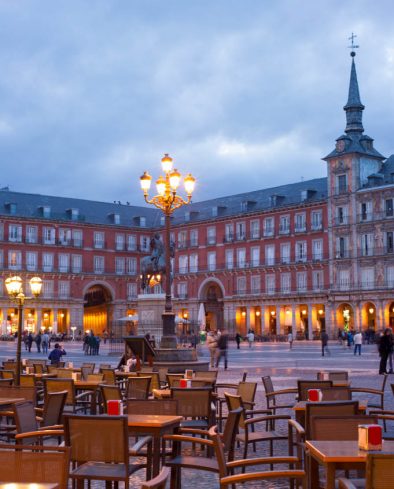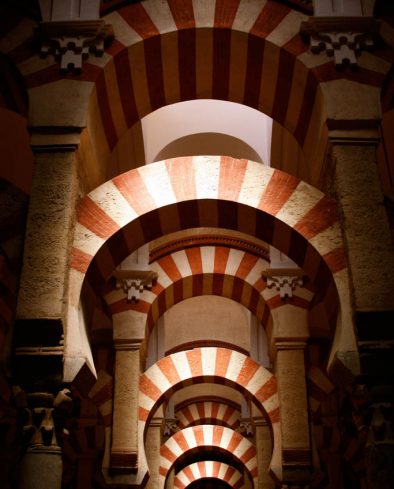120+ Bucketlist Ideas - What to do in Spain
Seductive and sublime, Spain lulls you into a sphere of color and culture. While holding true to its old-world traditions and style, the country continues to innovate, building on the legacies left behind by legendary 20th-century artists and architects. From a fiery musical performance in an atmospheric tavern to wandering the golden sandstone lanes of a provincial capital, Spain creates an experiential experience at every turn. The sheer abundance of destinations has helped retain an authenticity, everyone able to create their own journey. And when you leave the country there’s no doubt as to the memories. Wherever you choose to explore, this is a country that provides an immersive experience.
Travel Different
Kated is a members only travel club for creative, luxury travel. We provide our members with the inspiration, tools, connections and trip protection to travel their way.
JOYFUL PLANNING
We give you the connections and support to keep travel planning fresh and exciting.
SIMPLE BOOKING
Plan with as many specialists as you want. Book and pay for complex, tailored trips in one place.
TRIP PROTECTION
Your entire trip is 100% protected, giving you the flexibility to book and travel with confidence.
Inspirational itineraries created by leading travel designers. Save favourites to your bucketlist with the heart. Make a trip request and we will connect you to a local travel designer to plan your trip.
Sensual Travel Experiences With Spanish Food and Wine
Spanish food is as vibrant as its old-world marketplaces, the scents mingling with the chatter of excitable eaters, each stall specializing in a distinctive dish or food, every trader seeking the unique without forgetting tradition. While the world knows of tapas and paella, these two icons are merely the starting blocks on a journey through Spanish cuisine, the aperitifs basking in glory. Proudly independent regions hold true to their culinary roots by promoting what is grown in their immediate surrounds. And what freshness! Spanish food is a celebration of the raw ingredient, an ode to the traditions of cuisine, from a time when ecological and farm to table weren’t sought after buzzwords but the everyday norm.
A pintxo of pulverized clam, tasted when wandering the streets of Bilbao. Thickly sliced and toasted farmer’s bread, soaked in fresh tomato juice and topped with olive oil, a breakfast treat in the south or a first course in Castilla y Leon. Perhaps something adventurous like a bull’s tail stew in Andalusia, or something you’ll encounter everyday you’re in a region, such as lightly grilled octopus in Galicia. As you travel across Spain the food plays an integral role in the overall experience, Spain a country that has perfected the basics while pushing the boundaries of the extravagant. You are never far from an outstanding restaurant. But just around the corner you’ll find that the most local looking of tavernas or restaurants can demonstrate remarkable quality.
Spanish wine fully arouses the senses. The rounded flavors of a Rioja, Tempranillo with a hint of Grenache, full in body yet soft on the palate. Fruitier and bolder Ribera del Duero, food wine of age and character. In Catalonia you find the sparkling bubbles, Cava from Penedes a serious rival to Champagne from Champagne. Sample single grape varietals in Priorat, taste old vintages favored by Hemingway, and you’re still only scratching the surface of what’s on offer. This is a country that produces huge quantities of wine yet carefully retains quality of their products, one that can infuse a sense of fun and exploration into the sublime tastes and smells.
Spend a few days in Spain and you’ll notice how the consumption of wine plays a major role in the laid-back rhythm, the odd afternoon glass helping to keep the towns at an indelibly slow pace. Wine is something to be savored here, but it’s also a product to be enjoyed, best epitomized by the Spanish approach to aging. In France, Italy and most other major wine-drinking nations, the very best wine must be purchased now and left to age in the cellar. In Spain, wine is only released when it’s ready to drink, an approach that throws away haughtiness. It’s an approach that encourages everyone to have fun with wine, rather than treat it as a symbol of high society. And it allows the visitor to taste the best of Spanish wine, without having to find a way to ship it home.
Where to Stay in Spain
Spain has the complete range of travel accommodation, unsurprisingly given it is the third most visited country in the world. Almost all the major hotel brands have a presence, especially in the cities and better known destinations. Local establishments are heavily supported and provide a complementary choice of places to stay in the four and five-star range. A lot of this accommodation is developed from historic architecture. You’ll find boutique guesthouses with an 18th-century Gothic facade, balconies overlooking a Plaza Mayor, vintage cottages surrounded by vineyards, and villas on cliffs above the beach. Fortresses have been transformed into luxury hotels while suites in old mansions and palaces befit a regal history. While it can be tempting to follow your favorite brands, the beauty of Spanish accommodation is found in the ability to blend history and culture into a place to stay.
Wandering across ancient cobbled stone you approach a 15th-century castle. The sense of history is exquisite, enclosing each step you take towards your room. From the terrace there’s a view over the plains, the fortress hanging high above the landscape. You’re staying in a parador, one of Spain’s unique five-star establishments that have converted from historic buildings. The day before you were sleeping in a 12th-century monastery, and tomorrow you’ll be beneath a mountain in a former royal palace. Later on the itinerary might be a night in a former royal hunting lodge. Paradors are a unique opportunity to sleep amid history, surrounded by the charm of yesteryear while enjoying a contemporary luxury that has brought them up to date. They’ve been boutique accommodation since long before boutique was a popular travel term and are one of the iconic highlights of Spain.
Moments of Spanish Culture for your Travel Bucketlist
Spain is never a passive experience. The local culture is evocative and embracing, quick to welcome you with its nuance and charm. For all the art and architecture and history, it is the culture that is most memorable from any visit. Languid hours on an al fresco terrace, a sense of family and community found at every turn, the vibrancy of a country where people value living over working. The Spanish capacity to savor life is the country’s great highlight, an attraction that transcends the proud and idiosyncratic differences found in each of the regions.
Dream of Spain and timeless images spring to mind, bathed in energy and the unique. Tapas, flamenco, red wine on a sultry summer terrace and an old cobbled square laced with Baroque decoration. But while the people are known for their passion, the country’s atmosphere is defined by a very laid-back way of life. Time is something to be savored here, encouraging you to travel slowly and really appreciate the details. Spain should not be rushed for the Spanish are never in a rush, their easy-going nature and dedication to enjoying life one of the great memories you take away.
It is this serene style of being that conserves energy for the great explosion of color and exuberance found in the country’s other enduring images: fiestas, bullfighting, multi-day processions and a fabulous extravagance of art and architecture. By being so easygoing at heart, a platform is set for the vibrant release of passion. This is usually the first paradox you experience, a blend of tranquility and vibrancy, a concoction of spirit and soul. Almost anywhere you go in the country, there’s opportunity to completely relax into the everyday rhythm or join the adventure characterized by fiesta.
Exploring Spanish Cities and Regions
Spain is a patchwork of cultures and landscapes, a jigsaw puzzle of history and tradition. Each part of the country has its distinctive experiences, the regions very proud of their own customs. Some are well known, adored by visitors for many decades now. Others remain under the radar, their pleasures reserved for those who go off the beaten track.
The concept of a unified Spain has always been a somewhat diaphanous concept. Throughout most of its history, the Iberian Peninsula has been a jigsaw puzzle of languages, cultures, countries and people. The idea of a Spanish culture is not a clear one and vast contrasts inhabit this land in Southern Europe. Admire the curves and tiles made by Gaudi in Barcelona; then explore the intricate geometric design of the Mudejars in Andalusia. Spend time with a Galician family, then compare the experience by meeting people from Valencia: both may live in small fishing villages in the same country but their mannerisms are completely distinct.
Traversing the country you step back in time. But to which era? Roman Segovia, Moorish Cordoba, epic 12th and 13th-century cathedrals in Castille y Leon, or exploring the wealth that poured into cities from the New World. Even the food is impossible to characterize into a single image. Tapas hopping through Seville, paella from Valencia, a pintxo crawl in Basque, and then a plate of octopus in Galicia. Spain seems an easy to understand concept from afar – it is anything but.
Exceptional Spanish History and Heritage
Spain’s history compels and it confounds, thousands of years of charm and contradiction distinguishing the Iberian Peninsula. This is a history that’s alive, not confined to books or museum montages. Layer after layer is etched onto city walls and castle ruins, narratives of myth and legend play out on cobbled lanes, the old world and new world mix confusingly in all the country’s regions. In most countries, guides tell you about the history. In Spain you can feel it, the legacy of the past an immersive part of any visit, the atmosphere of past centuries stirring the soul.
Wander beneath first-century Roman walls, be dazzled by Moorish design, find entire cities frozen in a past age, and wonder out loud how so much is so well preserved. History is not an afternoon sightseeing tour but an intrinsic part of the entire Spanish experience, much like culture and cuisine. Enigmatic and evocative, this is a history that is felt and smelt and heard, one that is equally poignant down a forgotten cobbled lane as it is in a 15th-century cathedral. Rather than museums full of relics, it is a sense of adventure that leads you through the various epochs of history.
Yet while the history is immersive, it is quick to move you across the centuries. No other country in Europe has preserved such a diversity of historical eras, perhaps because no other country has a history as complex as Spain, a land that has always been influenced by abroad. From the Greeks and Romans to the Moors, Catholic Crusaders and Napoleon, the Iberian Peninsula has been a land of colonization and takeover, influence arriving from Europe, Africa and the Middle East. Thrown into this cryptic mix is the wealth of the New World, plundered by conquistadores when Spain became the colonizer.
Dedicated historical tours provide a more detailed background to all these comings and goings. Certainly, to fully make sense of it all you need good guides and storytellers. But to experience the history you only need to step foot in Spain and take a look around. Heritage is part of the daily discovery, not just in the more than 40 World Heritage site. Spectacular monuments reveal a different time, whether an aqueduct that dominates an entire city or the gilded inscription hidden in an old mosque. And somewhere, somewhat imperceptibly, you develop a strong sense of this land and its remarkable past.
Active Experiences on Spain's Stunning Landscapes
Beaches hiding along coastlines of cliffs and fjords, vast open plains dotted with olive trees, mountains of wild and rugged excess...Spain’s patchwork of landscapes have a whiff of the ethereal, such diversity stitched together by the consistency of the country’s raw colors. This is a land of an untamed natural beauty, where mountains engulfed in snow tumble down to forests that hide wild bears and swathes of vineyards. Other than the famous beaches, such landscapes are rarely the reason to visit Spain. But they’re always an exceptional highlight, their allure as strong as the atmosphere inhabiting the cities.
Exploring these landscapes are an essential part of every visit to Spain. Watching over a Mediterranean harbor from a boutique hotel balcony in Catalonia; crossing Central Spain by Spain, ongoing miles of emptiness with a peculiar splendor; ascending to old Moorish villages perched high on stark cliffs; following the roads across the Pyrenees, every corner another viewpoint. Like the regions and cultures and cuisines of Spain, the landscapes celebrate a diversity that makes Spain feel like a jigsaw puzzle of a thousand pieces.
A remoteness of landscape has helped to preserved nature that goes beyond what you’d expect to find in Western Europe. Wild lynx still hunt in Spain, beneath the watchful eyes of black vultures. Thousands of miles of hiking trails are hidden from the eyes of others. Over 200 nature reserves help preserve precocious ecosystems, with 13 national parks revealing the most dramatic of Spain’s lands. These national parks are spread across the country, easy to incorporate into a wider Spanish itinerary, hiking and wilderness able to combine seamlessly with the country’s history and culture.
More of What to do in Spain
Feeling the shake of a cantoar’s voice, the flamenco singer barely five meters from where you are sat in a tiny backstreet tavern. Standing on the walls of history, looking out from the same fortress that repelled armies through the medieval era. Cooking with eminent chefs, tasting with the winemakers, becoming part of a fiesta or lounging on a Plaza Mayor terrace with the locals. Spain is not a country where you sit on the sidelines, observing from a distance. Nor is it one where the day revolves around sightseeing. Much of the appeal comes from the experiential, this opportunity to feel and breathe what it is like to be Spanish, and dependent on where you travel, Andalusian or Galician or Catalonian.
The experiential does not necessarily manifest itself through activities. Encompassing and enchanting, it is a core part of the ambience found when you explore Spain. A broad spectrum of themes become integral to everywhere you go, the experiential alive in much more than individual day tours or ventures.
History is omnipresent, kept alive through customs and traditions that have been passed down through the generations. While each destination comes from a different era or period, they are universal in their ability to make history feel tangible and alive. Some places are expertly preserved, others in a redolent state of ruin, all able to authentically reflect a time.
Cuisine isn’t just found in a recommended restaurant or fine dining establishment. In a country that values dining, gastronomy plays an essential part in your experience. You’ll encounter vast regional variations and all manner of specialities, yet every corner of the country maintains this simple ability to open your senses to the cuisine. Dedicating time to dining is a major part of Spanish culture and you’ll quickly see why, through what you eat and the atmosphere that meal times can bring.
Spanish design takes its influence from all over. Try to blend North Africa calligraphy, Italian Renaissance, French Gothic, inspiration from Latin America and you’ll only scratching the surface on what went into the Spanish cauldron of design. Over the centuries these diverse influences have coalesced into something absolutely Spanish, manipulated and moulded into the inimitable. Revealing itself through art and architecture, design is another experiential element of visiting Spain.
There a hypnotic quality to the seeming endlessness of the nature and landscapes. Some are dramatic, idolized by a photo or panorama. Yet most are more subtle in their beauty, nothing out of place as they extend and extend and extend. Rather than remember through a single viewpoint or image, the landscapes become an ineffable highlight, something pleasant and always there but difficult to describe.
You can also follow the trail of literature and language, listening to how the Spanish language be complemented by proud regional languages. Born out of a monastery in La Rioja, it’s a language that is quick to reward once you have mastered a few simple phrases.
